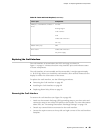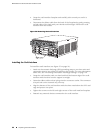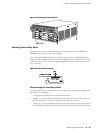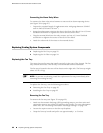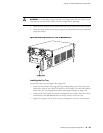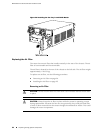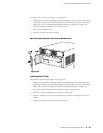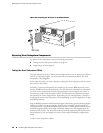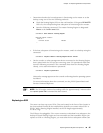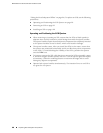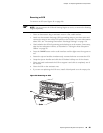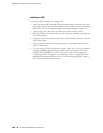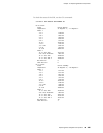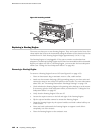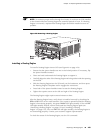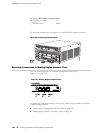
1. Determine whether the host subsystem is functioning as the master or as the
backup, using one of the two following methods:
■
Check the Routing Engine LEDs on the craft interface. If the green RE MASTER
LED is lit, the corresponding host subsystem is functioning as the master.
■ Issue the following command. The master Routing Engine is designated
Master in the Current state field:
user@host> show chassis routing-engine
Routing Engine status:
Slot 0:
Current state Master
...
2. If the host subsystem is functioning as the master, switch it to backup using the
command:
user@host> request chassis routing-engine master switch
3. On the console or other management device connected to the Routing Engine
that is paired with the SCB you are removing, enter CLI operational mode and
issue the following command. The command shuts down the Routing Engine
cleanly, so its state information is preserved:
user@host> request system halt
Wait until a message appears on the console confirming that the operating system
has halted.
For more information about the command, see the JUNOS System Basics and
Services Command Reference.
NOTE: The SCB might continue forwarding traffic for approximately 5 minutes after
the request system halt command has been issued.
Replacing an SCB
The router can have up to two SCBs. They are located in the front of the chassis in
the slots marked 0 and 1/0 (the multifunction slot1/0 can contain either SCB1 or
DPC0). With a Routing Engine installed, each SCB weighs approximately
9.6 lb (4.4 kg).
The SCBs are hot-pluggable. If the router contains a redundant host subsystem, the
backup SCB and Routing Engine are hot-removable and hot-insertable. Before you
replace an SCB or a Routing Engine, you must take the host subsystem offline (see
Replacing Host Subsystem Components ■ 97
Chapter 13: Replacing Hardware Components



